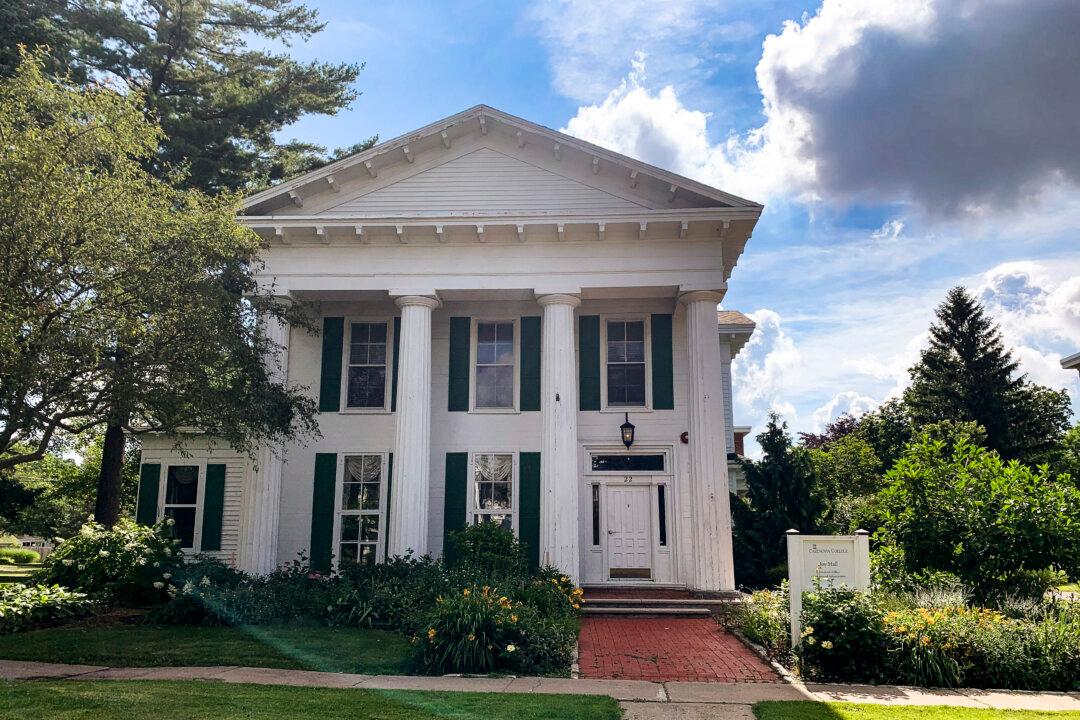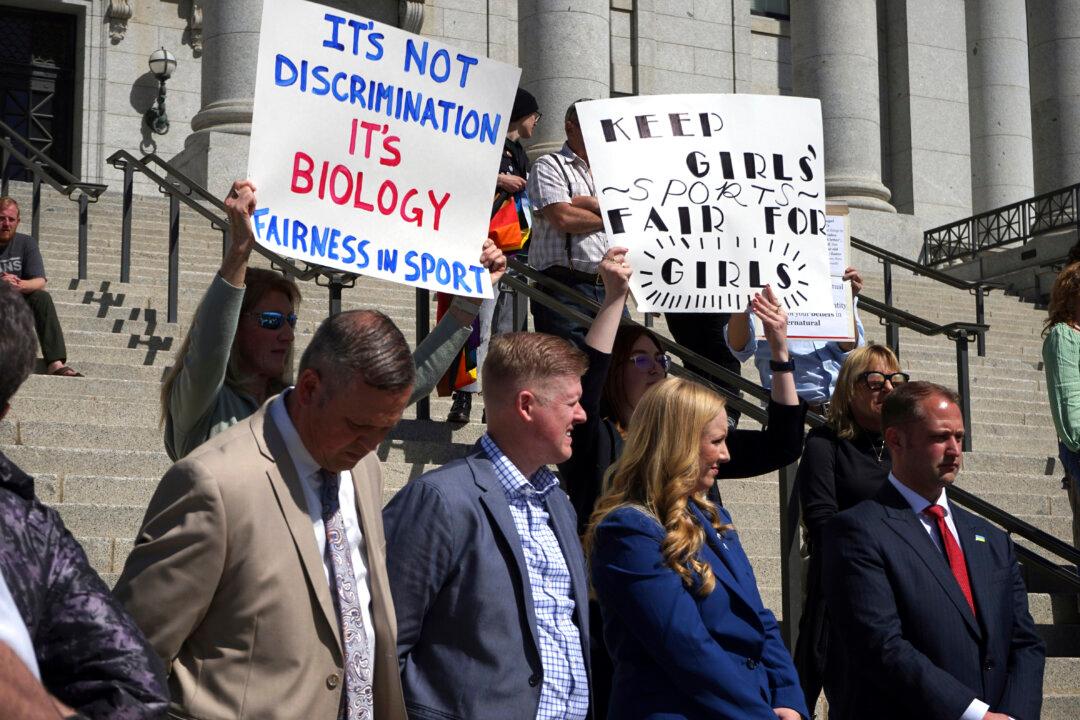Before Cazenovia College in upstate New York closed in May 2023 because of decreasing enrollment and financial problems, students were given a list of comparable schools in the same region with similar tuition fees, major courses of study, financial aid availability, and athletic programs.
One of the schools on that list, Wells College, shut down one year later for the same reasons—low enrollment (354 students) and financial problems.
“It’s pretty crazy when that happens with two schools in two years,” Carter Matus, who transferred to Elmira College from Cazenovia College, said. Some of his classmates had considered Wells but chose different schools.
“Luckily, they didn’t have to go through this again,” he said.
What Mr. Matus went through was a brief but “semi-stressful” episode of finding another small higher learning institution at about the same costs that would accept his credits and allow him to continue playing varsity baseball. He changed his major from art to business and still maintains his custom trade and proprietorship, Art by Carter J. Matus.
“It’s been an OK experience,” he told The Epoch Times on June 25, “but I do miss being closer to a city [Syracuse].
“If I had to do it all over again, I probably would have stayed in Florida.”
These are uncertain times for upstate colleges. Along with Wells, The College of Saint Rose in Albany and St. John’s University’s Staten Island campus also graduated their final classes in May. Medaille University in Buffalo shut its doors last summer. Clinton Community College survived only by closing its campus and using space at neighboring SUNY Plattsburgh. Several other schools, private and public, made deep budget cuts.
The decline is not limited to the Empire State.
According to the National Student Clearinghouse Research Center, college and university enrollment has decreased by about 1.5 million students, or 7.4 percent, in the past decade.
Notable closings in other parts of the country this year include Notre Dame College in Ohio, Birmingham-Southern College in Alabama, University of Saint Katherine in California, and Hodges University in Florida.
The main reason is that, with declining birth rates, there won’t be enough students for every school, according to Adam Kissel, visiting fellow in the Center for Education Policy at The Heritage Foundation.
College and university decision makers across the nation must have known about this population trend 20 years ago, he said, yet too few of those representing private schools had conversations about merging or sharing services to survive.
Other Contributing Factors
There are a number of other factors contributing to these enrollment trends and the likelihood of more campus closings, according to Mr. Kissel.Americans are increasingly questioning whether a college degree is worth the money at a time when interest is rising in vocational trades and career and technical education programs, which involve smaller commitments of time and money.
“You hear about the massive student debt, and a lot of them [prospective students] are saying, ‘I could go into plumbing or electrical work,’“ he said. ”Why would I need a bachelor’s for that?”
There are also cultural changes across U.S. campuses. The college culture of drinking and partying isn’t as attractive as it used to be. As students become more serious about their courses of study when they realize the cost of attending colleges and universities, there’s also a growing distaste for progressive ideologies that have become commonplace in higher education, Mr. Kissel said.
In 2022, the Harvard Crimson student newspaper reported that 80 percent of school faculty identified themselves as politically liberal. In September 2023, Inside Higher Education published an opinion piece, “Higher Ed Can’t Afford its Left-Wing Bias Problem.”
“Students ask themselves if they want to be in that environment,” Mr. Kissel said. “Many people no longer trust colleges to educate students well.”
The “final jolt” was the much delayed release of the 2024–25 Free Application for Federal Student Aid, which affected $1.8 billion in federal student aid and caused some students who otherwise would have to not apply for college, he said. Mr. Kissel said this debacle will cause many more struggling higher learning institutions to close in 2025.
Depending on the state and type of school, the total cost of annual tuition, room and board, and fees across the nation this past academic year ranged from $11,000 to more than $80,000, according to the College Board. However, the net cost that students pay after scholarships and work-study initiatives might be a fraction of that.
National Conference of State Legislature (NCSL) Senior Policy Specialist Andrew Smalley estimates that the number of higher education institutions that closed in the United States this year was as high as “one a week,” although that would include even the smallest of online certificate or degree programs that don’t have a campus.
Mr. Smalley, speaking during NCSL’s June 16 podcast “Making Higher Education Accountable,” said data still support that college graduates earn more than high school graduates, by an average of $30,000 a year.
He said the pressing concern is that fewer than 20 percent of students who attend an institution that closes will actually finish a degree or certificate program at another school.
“This is a huge derailer for students, and there’s a lot states can consider around financial monitoring, mergers, consolidations, and closure procedures should an institution close,“ Mr. Smalley said. ”And states are really considering how to think about those challenges, and what they can do to support students earning their credential or degree from those institutions.”
Much like the students who were displaced by the recent closings of New York state colleges and universities, faculty and staff members also had to become mobile and flexible if they wanted to continue their passion for education.
David Rufo was a childhood education professor at Cazenovia College before the announced closing. He had hoped to obtain tenure and thought he’d finally found the perfect fit in a tight-knit community with plenty of academic freedom following prior jobs at Syracuse University and Fordham University in New York City.
Within a matter of weeks, Mr. Rufo secured a tenure-track teaching position at Utica University. The move increased his commute from two minutes to one hour, but the trade-off is job security in an institution where enrollment is growing and more support staff are there to help him with research and publications.
“Both places seemed to really appreciate innovation,” he told The Epoch Times on June 25. “Cazenovia was really rewarding, but this has been rewarding so far as well. New challenges can be part of the experience.”







